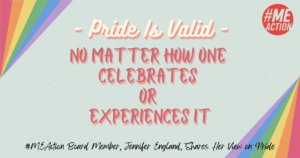Australia: An hour-long, nationally televised discussion panel on myalgic encephalomyelitis / chronic fatigue syndrome (ME/CFS) on Oct. 16 has raised the ire of many in the patient community, who claim the program overrepresented the likelihood of recovery from the illness, and promoted harmful graded exercise therapy (GET).
Insight is a weekly current affairs show hosted by national broadcaster SBS. The format is a debate on a single issue with a panel of guests and a studio audience who participate in the discussion. For this episode on ME/CFS, producers invited input from seven patients (including my young son Luke), ranging from the severely ill to the recovered, with leading Australian researchers, a specialist general practitioner, an exercise physiologist, and a key government advisor and clinician.
[maxbutton id=”19″ url=”https://www.sbs.com.au/news/insight/tvepisode/chronic-fatigue-syndrome” text=”Watch the TV Program” ]
The approach of the programme is carefully neutral, and for this episode it presented an overview of the illness in Australia from the view of patients, doctors, researchers, and decision-makers. The direction in the filming and editing was sympathetic and highlighted patient experiences with the difficulties of initial diagnoses and poor treatment by doctors and government support services.

However, the inclusion of two recovered patients on the discussion panel, both athletes, and input from key government advisor, Professor Andrew Lloyd, and exercise physiologist, Nathan Butler, from the Active Health Clinic promoting graded exercise has drawn criticism from both the patient community and the general public. Patients also condemned the absence of older sufferers who have been ill for decades.
Despite this, as a participant I felt that overall the show was positive for the patient community in terms of raising public awareness, and it provided a national platform for advocacy efforts. #MEAction Network Australia stepped up with a comprehensive grassroots campaign to highlight issues of concern with a live-tweet of the programme and links to articles, research, patient stories and graphics for use on social media.
Interest was certainly high: the promotional videos for the show on Facebook alone clocked more than 1800 shares and 760,200 views, with clips of the more severe patients, Ketra Wooding and my son Luke, viewed more than 563,000 times. Follow-up articles online and in national print and online media have also seen an outpouring of support and sympathy from the general community, particularly for the suffering of patients Andrew Bretherton and Deb Adams who both appeared unwell on-stage and crashed badly after appearing on the show, for young Luke who is housebound at 15, and for Ketra Wooding, a staunch advocate for ME/CFS from her bed in the dementia ward of a nursing home who produced the 30-minute, After Unrest – Ketra’s Story, video earlier this year.
- Read the article about Ketra in the Sydney Morning Herald.
- Read the article about Luke Temm in Daily Mirror.
- Read the article about Andrew on ME Australia.








6 thoughts on “Australia: National TV Program Debates ME/CFS, Raises Ire of Community”
Thank you Jen, for this really useful summary of the programme – it’s particularly appreciated since I don’t have a working TV and still haven’t been able to watch it due to SBS’s ‘On Demand’ videos not working on my laptop.
A couple of my Meals on Wheels volunteers saw it and said they found it very interesting and eye-opening, but I was unsure quite what they would have learnt from it (ie how accurate and representative, or otherwise, the impression given was).
Having read your review, I’m thinking I might use reference to the programme as the basis for an article in our local community newsletter. Just the power of being able to say “As Seen On TV!!” may well help make this issue more real somehow, for some people.
Thank you Jen, for this really useful summary of the programme – it’s particularly appreciated since I don’t have a working TV and still haven’t been able to watch it due to SBS’s ‘On Demand’ videos not working on my laptop.
A couple of my Meals on Wheels volunteers saw it and said they found it very interesting and eye-opening, but I was unsure quite what they would have learnt from it (ie how accurate and representative, or otherwise, the impression given was).
Having read your review, I’m thinking I might use reference to the programme as the basis for an article in our local community newsletter. Just the power of being able to say “As Seen On TV!!” may well help make this issue more real somehow, for some people.
I was disappointed by some aspects of the show.
To have so much emphasis on exercise and two athletes who ‘beat’ this disease make ME CFS sufferers feel that we are ‘just not trying hard enough’
Very dispiriting for patients who could not possibly ‘Try’ any harder.
The genuine patients, though, were marvellous.
I was disappointed by some aspects of the show.
To have so much emphasis on exercise and two athletes who ‘beat’ this disease make ME CFS sufferers feel that we are ‘just not trying hard enough’
Very dispiriting for patients who could not possibly ‘Try’ any harder.
The genuine patients, though, were marvellous.
The show was a huge step in the right direction, it was disappointing that the fact that exercise intolerance as a cardinal symptom of the disease was not prominent and that no-one from Physiologic about heart rate pacing – which inevitably demonstrates that patients need to do LESS not more activity. Still a great show. For help on managing the disease have a look at : https://www.youtube.com/watch?v=yKoheNZlqXg&feature=youtu.be
The show was a huge step in the right direction, it was disappointing that the fact that exercise intolerance as a cardinal symptom of the disease was not prominent and that no-one from Physiologic about heart rate pacing – which inevitably demonstrates that patients need to do LESS not more activity. Still a great show. For help on managing the disease have a look at : https://www.youtube.com/watch?v=yKoheNZlqXg&feature=youtu.be
Comments are closed.